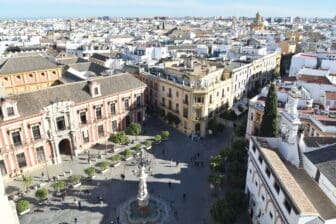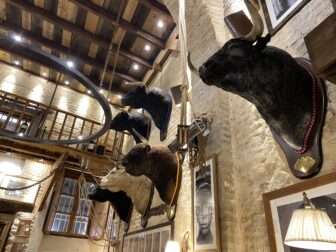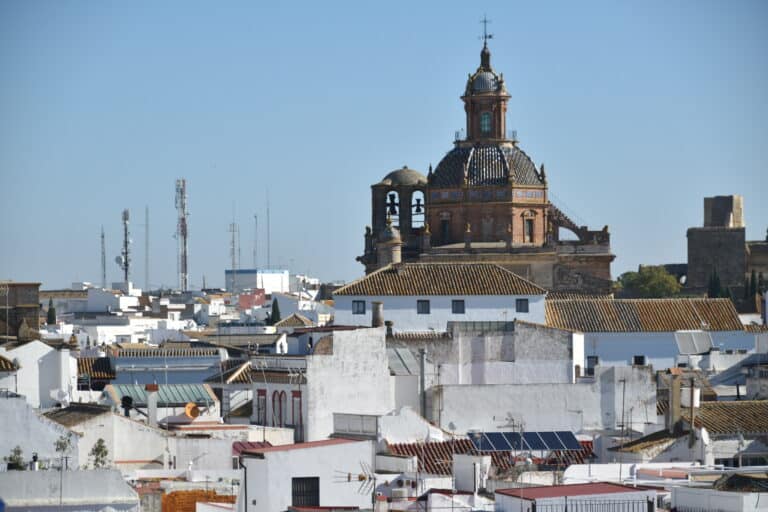
[Nov. 2021] On the second day in Carmona, in the Andalusia region of Spain, we devoted ourselves to sightseeing.
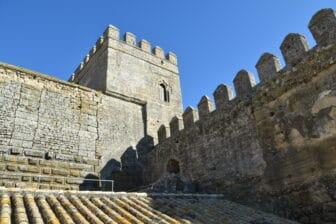
First, the Alcazar de la Puerta de Sevilla (fortress of the Saville Gate), which houses the tourist information centre.
At the tourist information centre, we got a map and learned about the hours when tourist attractions were open.
In such a small town, each famous place opens limited time only, so you have to be careful.
At this Alcazar de la Puerta de Sevilla, there is a service where you can listen to voice guidance with a QR code, and I started listening, but I couldn’t take a picture because my hands were full, so I gave it up on the way.
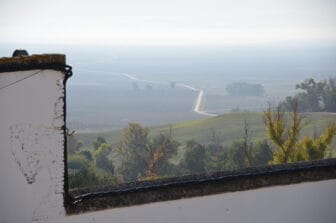
According to the guidebook, the origin of the Seville Gate, the main gate to the old town, dates back to around 2000 BC.
After the Carthaginian and Roman times, it became a fort when it was under Islamic rule.
We ran into a large local Spanish tourist group here and climbed up while avoiding them.
The main point here was the view.
We could see a beautiful view of the town of Carmona and the plains beyond.
A white town under the blue sky.
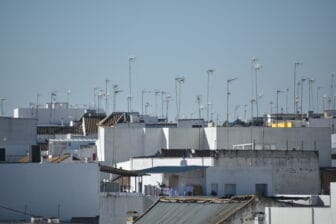
Even the view of aerials lined up on top of houses made a good picture.
For a town with a population of less than 30,000, there were many fine churches, so it must be a devout town.
Next we visited Plaza del Mercado de Abastos.
It is a charming market square surrounded by portico.
The guidebook describes it as “bustling”, but it was quiet when we went.
The square was surrounded by shops, but most of the shops had shutters down.
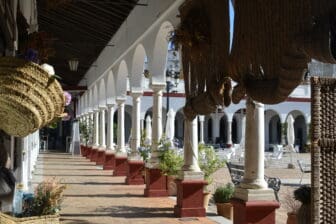
It was still in the morning, but maybe it was too late, or maybe it was the day of the week?
We drank a glass of beer at the bar in the corner of the square while the sun was shining and it was so good!
My husband managed to find out from the waitress that the shops surrounding the square were permanently closed, except for three or four.
That is a shame…
Did the number of tourists decrease because of the Covid crisis and they couldn’t stand?
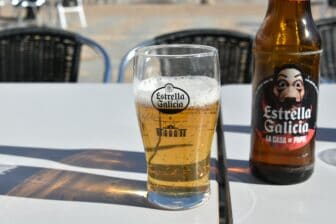
“I wish the town helped the shops and promote tourism,” my husband said.
After drinking beer, we went to the town hall.
Because there is a Roman mosaic in this.
I felt a little difficult to enter the town hall where people were working, but the receptionist was accustomed to it and gestured to us to get in.
The mosaic was on the patio of the town hall and depicts the head of Medusa.
We went upstairs and could see it from above.
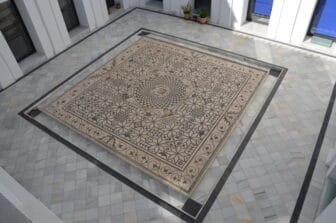
It must have been repaired, as it was very beautiful.
Then, as the Santa Maria monastery, which should have been open, was closed, we entered the town museum next door.
The museum was also a building with a patio.
There were many exhibits that traced the history of Carmona, but none were so eye-catching.
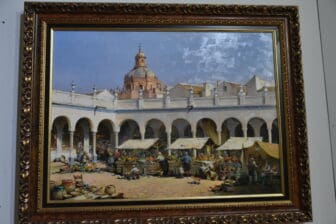
I think it was a little interesting that the spices that are indispensable for local cuisine were lined up and I was able to smell the scent.
It turns out that quite a lot of Middle Eastern spices are used.
Then there was a painting from the time when Plaza del Mercado de Abastos, the market square we visited earlier was busy.
By the time we left the museum, it was late lunch time.


